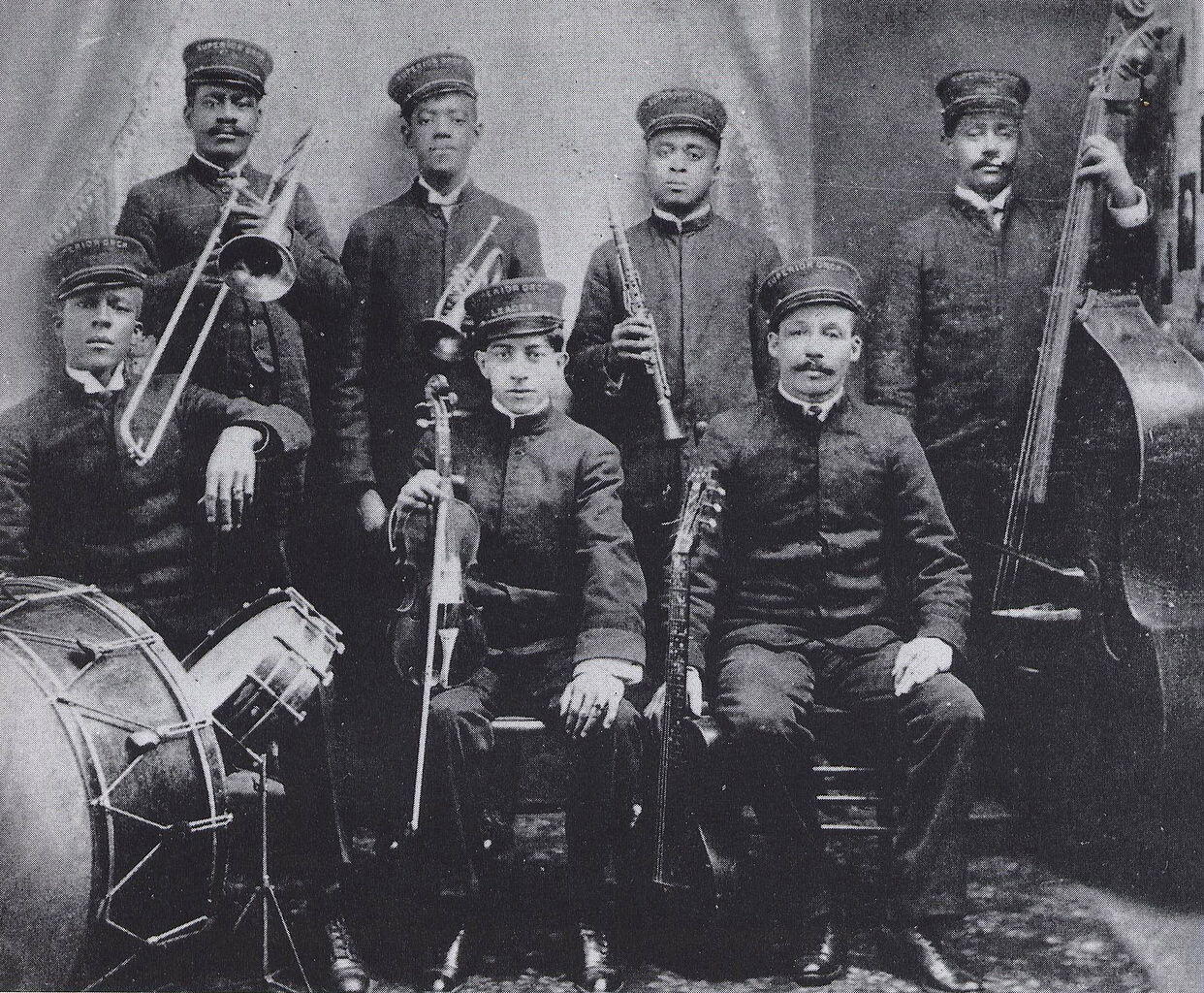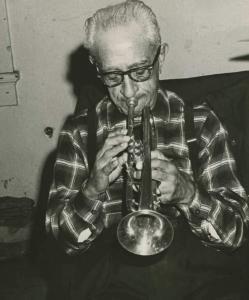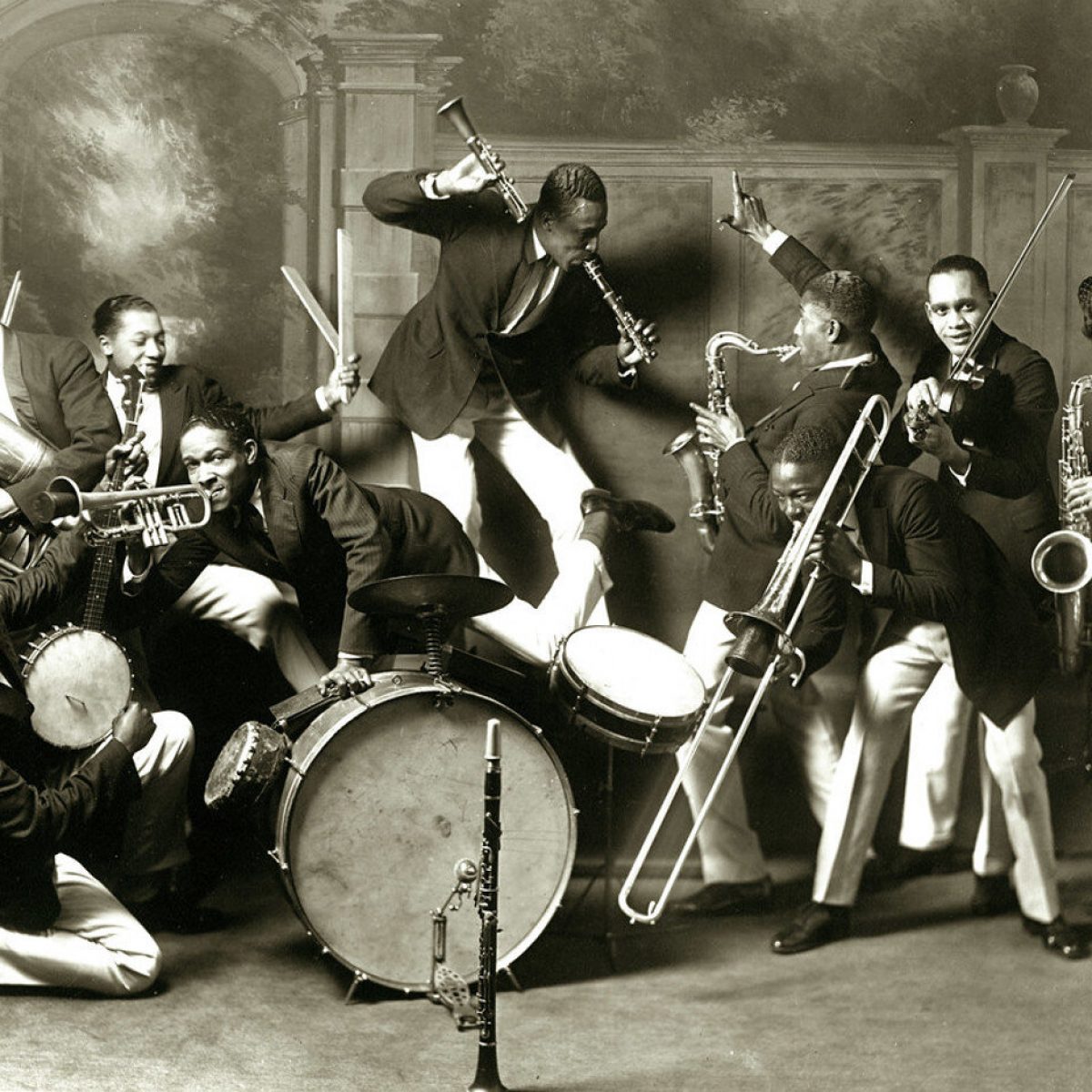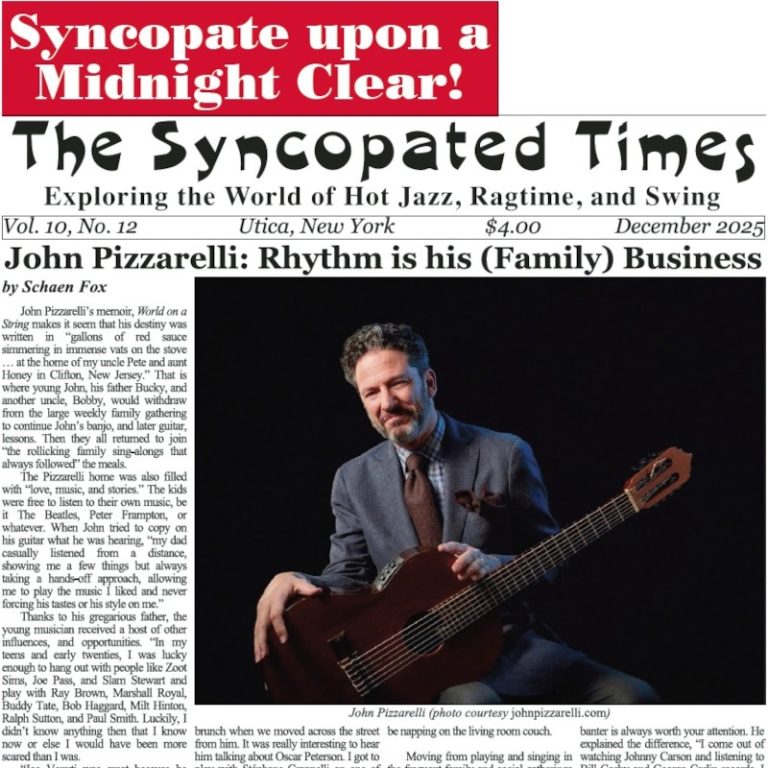
He got his start on the violin, although he did play mandolin, guitar, banjo, trumpet, baritone horn, xylophone and trombone. Listening to the records he made in the 1960’s reveals the differences between the downtown “orthodox” ragtime orchestras and the uptown “syncopators”. Bocage came from the downtown school and preferred soft, melodic playing as opposed to the hotter or as he referred to them “vicious” styles as played by Buddy Bolden, Freddie Kepperd and later work by Bunk Johnson, a former pupil.
Born into a prosperous Creole family in Algiers across the river from New Orleans, Bocage began taking violin lessons at 13. He was soon playing local parties with his father’s group, but soon began playing with various groups in Storyville. At 21, Bocage became the leader and violinist for the Superior Orchestra, which at the time was one of the city’s most popular ragtime bands and featured Bunk Johnson on cornet. Bocage is considered responsible for Bunk’s learning to read music.

During this period Bocage also saw and heard Buddy Bolden’s band, as well as a band led by Freddie Keppard, both of whom he considered inferior to Bunk. In 1910 Bocage joined Frankie Dusen’s Eagle Band on violin which was essentially the Bolden band without Buddy. Bocage began learning the trumpet and with Fate Marable in 1917 formed the first inter-racial band on the Strekfus line.
Throughout this period Bocage played with a who’s who of New Orleans brass and dance bands, many of which contained the most famous musicians ever produced in the Crescent City. In 1918 he played in both the Onward band which included Joe “King” Oliver and Henry Allen Sr.’s band. He also became a regular member of the Tuxedo Orchestra, which included Louis Armstrong. In 1922 he took over leadership of the Excelsior band which he continued to lead up until the band’s demise in 1932. He kept the entire working stock of band marching and dancing arrangements and neither he, nor his family after his death have ever let anyone copy the documents.
In 1923 Bocage rejoined Piron’s New Orleans Orchestra and with the help of Clarence Williams went to New York for a brief residency at the Cotton Club. The band also recorded for Okeh and Victor. Both songs were rejected and remain unissued. Piron’s New Orleans Orchestra did record 13 sides in 1925 and again in 1932 for Victor as the Creole Serenaders.
In 1939, Bocage made his living in the insurance business and briefly left New Orleans to take Bunk Johnson’s place with Sidney Bechet’s group in Boston. As the New Orleans revival of the 1940’s came to a head, Bocage recorded with some of the old-time New Orleans musicians as the Jazz Pioneers as well as playing with Henry Allen Sr.’s brass band in Algiers.
Throughout 50’s and 60’s Bocage led various incarnations of the Creole Serenaders, and released an album on Riverside 60’s for Riverside called: “Loves-Jiles Ragtime Orchestra/Creole Serenaders” and was becoming an important part in the early Preservation Hall until his death in 1967 at the age of 80.-by Ted Gottsegen
See: Barnes Bocage Big Five – 1954
| Creole Serenaders |
Redhotjazz.com was a pioneering website during the "Information wants to be Free" era of the 1990s. In that spirit we are recovering the lost data from the now defunct site and sharing it with you.
Most of the music in the archive is in the form of MP3s hosted on Archive.org or the French servers of Jazz-on-line.com where this music is all in the public domain.
Files unavailable from those sources we host ourselves. They were made from original 78 RPM records in the hands of private collectors in the 1990s who contributed to the original redhotjazz.com. They were hosted as .ra files originally and we have converted them into the more modern MP3 format. They are of inferior quality to what is available commercially and are intended for reference purposes only. In some cases a Real Audio (.ra) file from Archive.org will download. Don't be scared! Those files will play in many music programs, but not Windows Media Player.






